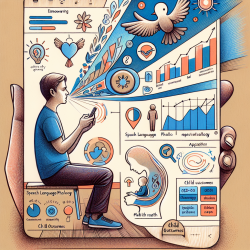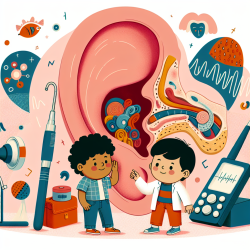Introduction
As a speech-language pathologist with a passion for data-driven decision-making, I am always on the lookout for evidence-based strategies that can improve outcomes for children. A recent study titled "Physical Activity Participation among Children and Youth with Mental Health Symptoms: Clinician Perspectives" offers valuable insights into how physical activity can play a crucial role in supporting mental health in children and youth. This blog will explore the key findings from this study and discuss how practitioners can leverage these insights to enhance their clinical practice.
Understanding the Barriers
The study highlights several barriers to physical activity participation among children with mental health symptoms. These barriers include:
- Intrapersonal Factors: Symptoms of depression, anxiety, and low motivation can hinder a child's willingness to engage in physical activity.
- Caregiver Influence: Parents' attitudes towards physical activity and their level of involvement can significantly impact a child's participation.
- Financial Constraints: The cost of sports and activities can be prohibitive for some families.
- Screen Time: Excessive screen time can reduce opportunities for physical activity.
- Environmental and Cultural Factors: Lack of access to safe play areas or cultural norms can limit physical activity options.
Facilitators to Encourage Physical Activity
On the flip side, the study also identifies facilitators that can promote physical activity among children:
- Enjoyment: When children find activities they enjoy, they are more likely to participate regularly.
- Knowledge of Benefits: Educating children and caregivers about the mental health benefits of physical activity can motivate participation.
- Caregiver Participation: When caregivers actively participate in physical activities, it sets a positive example for children.
Implementing Research Insights in Practice
Practitioners can use these insights to tailor their interventions and support strategies. Here are some practical steps:
- Conduct Motivational Interviews: Engage children in conversations about their interests and preferences to find enjoyable activities.
- Educate Caregivers: Provide resources and workshops to inform caregivers about the benefits of physical activity for mental health.
- Collaborate with Schools: Work with schools to create inclusive and accessible physical activity programs.
- Address Financial Barriers: Advocate for community programs that offer low-cost or free physical activity options.
Encouraging Further Research
While this study provides valuable insights, there is always room for further research. Practitioners are encouraged to explore additional studies and collaborate with researchers to continue improving strategies for promoting physical activity among children with mental health symptoms.
To read the original research paper, please follow this link: Physical Activity Participation among Children and Youth with Mental Health Symptoms: Clinician Perspectives.










